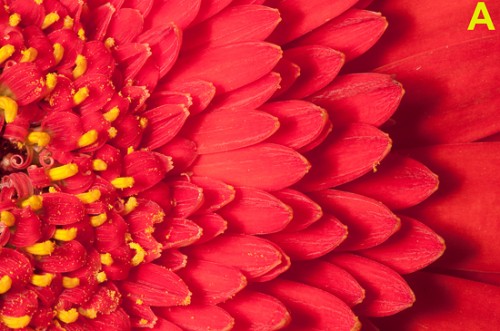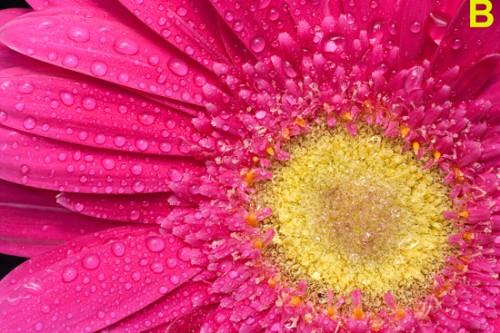Question
I have started macro nature photography using a new Nikon 85 mm f/3.5G VR Macro lens on my Nikon D90 camera. What is best in terms of lighting? Should I use a shoe-mounted flash unit with a downward tilt, or a ring flash, or a bracket with two arms, each holding a separate flash unit? H. H.
Answer
In my experience, on-camera flash is not suitable for extreme close-up photography. The flash may not be able to light the bottom part of the subject in extreme close-focus image making. That’s because it does not allow for an adequate downward tilt and the lens barrel may block some of the light. If you do want to use a conventional flash unit, move it off-camera using a TTL extension cable or Wireless Off Camera Flash (if your camera supports the latter.) For softer lighting add a large diffuser accessory such as the Lumiquest Softbox III. (See this item at B&H ; See this item at Amazon Lumiquest The Softbox III – Lumiquest LQ-119)
The latest macro ring lights – such as the Metz 15 MS-1 that I recently tested – are very versatile and easy to use. They typically consist of a circular mechanism that’s mounted on the front of a macro lens with an adapter ring. The “ring” – with two individual flash tubes – can be rotated so you can place the two light sources at the desired position. The Metz kit (and some others) also includes a diffuser accessory that’s useful in extremely close focus work. (See the Metz unit at B&H; see this item at Amazon Metz MZ 15110 Digital Macro Slave (Black))
By default, both tubes produce the same power output, so the light is somewhat flat and dull. I prefer the more directional light that’s possible with ratio control. Set this feature so that one tube produces most, or all, of the light for more directional illumination with some shadows for a modeling effect and greater contrast.
The macro flash brackets – such as the Nikon R1 Close Up Speedlight, with two built-in tubes – are even more versatile in terms of the exact placement of the two light sources. This Nikon kit is definitely less bulky and less finicky to use than the old-style brackets – with separate holders or arms – that require you to add two flash units. (Check out the R1 at B&H; or at Amazon Nikon R1 Wireless Close-Up Speedlight System)
In my experience however, a macro ring light setup is adequately versatile; it’s also more portable than even the Nikon R1 kit. But if your budget is tight – and if you already own a conventional flash unit – the technique and the affordable accessory described in the first paragraph would be the most suitable.


Lars Clausen
8 Dec 2009How about a flash unit mounted on the camera pointed into a reflector? How does that compare to having it off-camera with a large diffuser, or to a macro flash?
PeterKBurian
12 Dec 2009Lars: Yes, that would also produce directional, soft light. I have never tried that technique.
It would require you to be able to position the flash unit and the reflector just right – in relation to the subject. It seems to me that would be a lot more practical if using off-camera flash. Then, you could place the flash unit and reflector just about anywhere.
If your camera does not support Wireless Off Camera TTL flash, you can buy a TTL cable that runs from the camera’s hot shoe to a remote flash unit.
Peter http://www.peterkburian.com